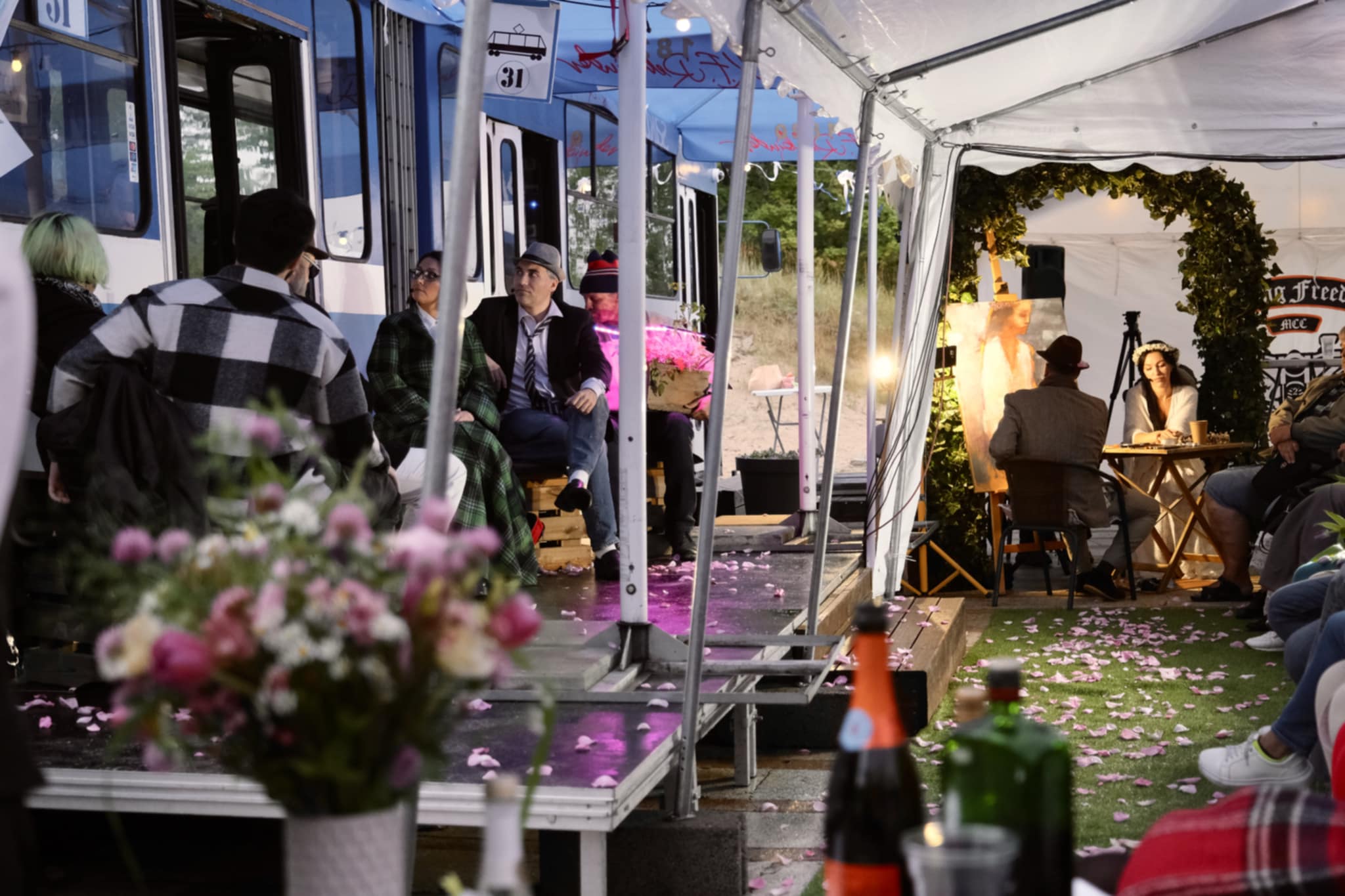Narva's cultural revival

Residents of Estonia's third-largest city, Narva, are tired of being called ‘the second Crimea’. The national government has looked at the border city’s nearly exclusively Russian-speaking population through a geopolitical lens since Estonia regained independence in 1991. Following Russia's invasion of Ukraine, most of Europe is too. But other things bother the locals: poverty, unemployment, the closure of Russian-speaking schools, and the general sense of being forgotten by Tallinn.
But some Narvans, like filmmaker Jelena Pazilina, see hope in the cultural revival of the city. A recent performance of her theatre play Tram was an attempt to overcome local apathy and invigorate the Russian-speaking community. The drama, written by Narva resident Maxim Belozerov, tells the story of a tram travelling through time, from winter to summer. As the fictional weather improves, the hodgepodge mix of strangers embraces love. Locals were cast in all roles; most of them amateurs.
‘We are preparing to repeat it in 2025 in a larger format,’ says Pazilina. ‘Narva residents are asking us for it.’
Since independence, successive governments have neglected the once thriving industrial hub. Neoliberal economic policy has shut many companies – including the textile company Kreenholm, once the world’s largest cotton spinning site – and restrictive nationality laws make it difficult for ethnic Russians to obtain Estonian passports. Today, only half of the city’s 53,000 residents hold Estonian citizenship. A third are Russian citizens, while over a tenth are stateless. The city has almost double the national rate of unemployment, according to the country’s statistics office, and young people are leaving in droves.
The Covid-19 pandemic and the 2022 Russian invasion of Ukraine dealt further blows. While the border with Russia remains open, the once vibrant social and cultural exchange between the two nations dried out when Estonia took a strongly pro-Ukrainian position, and Russian and Estonian speakers elsewhere in the country remain estranged. The Russian annexation of Crimea and invasion of eastern Ukraine have turbocharged the Estonian government’s security concerns that Narva will be next.
Pazilina sees these external crises as an opportunity to revive the lethargic city. she said.
In the face of geopolitical tensions outside their control, community art, like the Tram performance, helps locals establish a sense of connection and rebuild the community. Ongoing attempts to revive the Kreenholm textile plant as a post-industrial art space are animated by, the Narva Art Residency, the annual Station Narva music festival and other activities. In 2025, the city will be the Finno-Ugric Capital of Culture, helping to protect minority cultures under threat in Russia. And Tram will be shown again, Pazilina hopes.
— Dominik Sipinski (@dominiksipinski)
📰 Read more from Tina Burrett, New Internationalist contributor and expert on media freedom and political power in Putin’s Russia
👉 Follow Estonian filmmaker Jelena Pazilina
✅ Sign up to the Narva Art Residency's Open Call for 2025
📅 Explore our Currents Calendar for all upcoming events and activities
Like what you've read? Support us with a tip.
Have a contribution for our Currents Calendar? Reply to this email with the details.
Are you a freelancer? Pitch us a story.

